

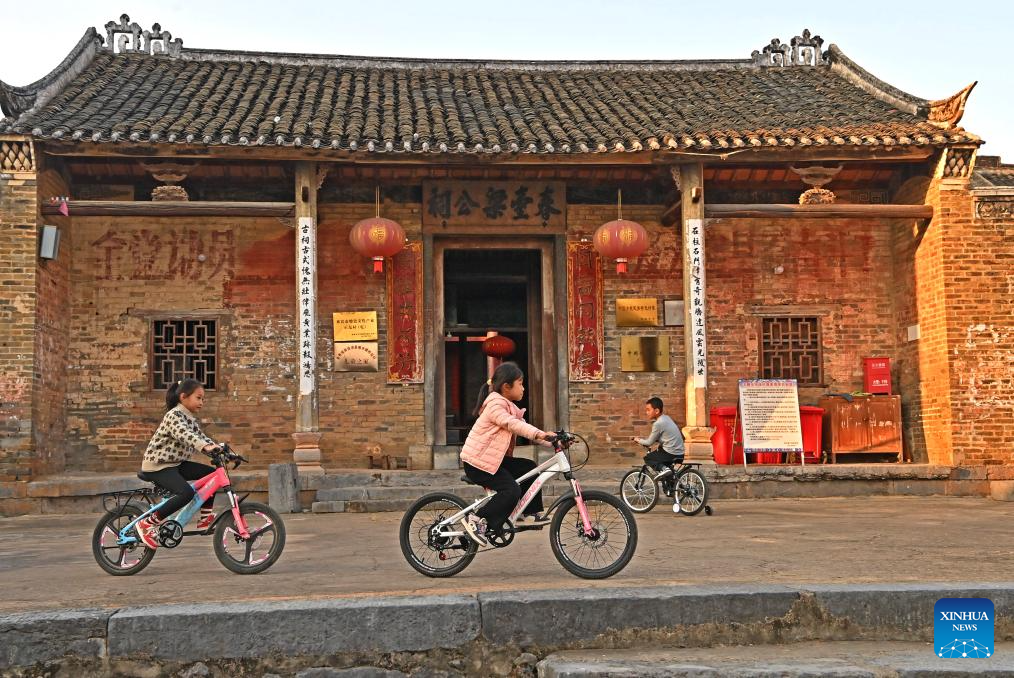
This photo taken on Dec. 18, 2024 shows kids cycling at Longteng Hamlet, Na'an Village in Tongmu Town of Jinxiu Yao Autonomous County, south China's Guangxi Zhuang Autonomous Region. Nestled in central Guangxi, Longteng Hamlet boosts 49 ancient buildings in the style of the Ming (1368-1644) and Qing (1644-1911) dynasties. From the end of the Ming dynasty to the present, for more than 400 years, the Liang clan has thrived here, which has been 17 generations so far.
In 1620, the Liang family moved here from the west part of south China's Guangdong Province. Overlooking the mountains covered with stones like dragon scales, this area looks like a soaring dragon. Therefore they named here "Longteng", meaning dragon flying in Chinese, and settled here ever since.
Covering an area of more than 20,000 square meters, the ancient building group in the hamlet is currently the best preserved and largest one of Ming and Qing dynasties in central Guangxi.
As living standards improved in recent years, the cultural life of the villagers has become increasingly rich, with various activities injecting vitality into the hamlet. (Xinhua/Zhou Hua)
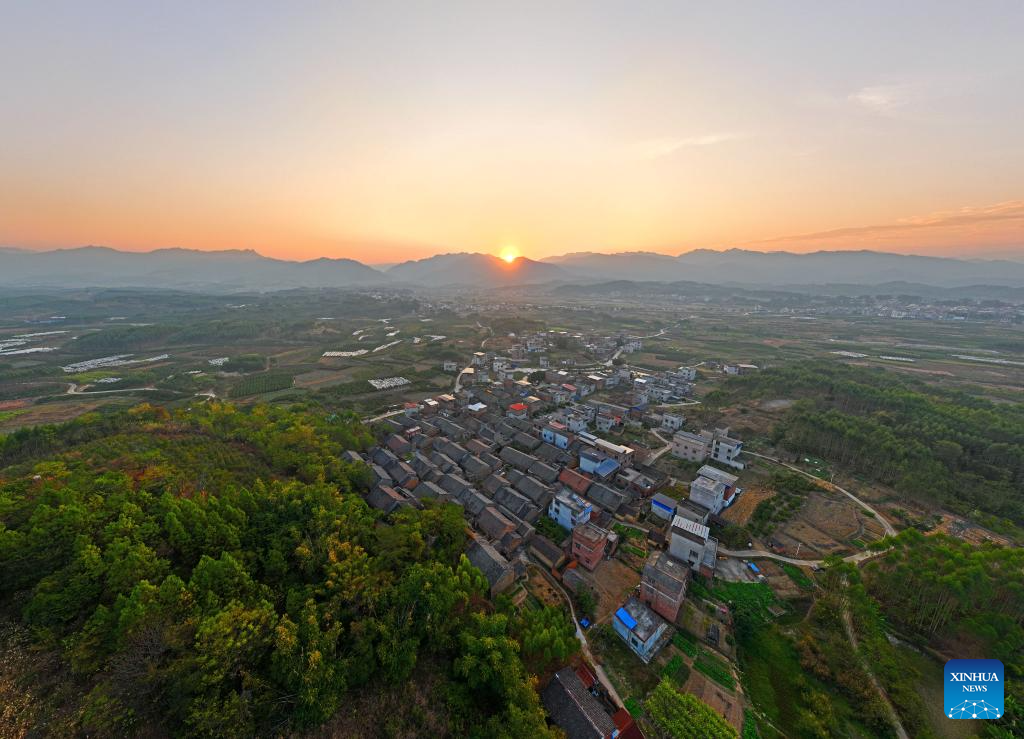
An aerial drone photo taken on Dec. 19, 2024 shows the scenery of Longteng Hamlet, Na'an Village in Tongmu Town of Jinxiu Yao Autonomous County, south China's Guangxi Zhuang Autonomous Region. Nestled in central Guangxi, Longteng Hamlet boosts 49 ancient buildings in the style of the Ming (1368-1644) and Qing (1644-1911) dynasties. From the end of the Ming dynasty to the present, for more than 400 years, the Liang clan has thrived here, which has been 17 generations so far.
In 1620, the Liang family moved here from the west part of south China's Guangdong Province. Overlooking the mountains covered with stones like dragon scales, this area looks like a soaring dragon. Therefore they named here "Longteng", meaning dragon flying in Chinese, and settled here ever since.
Covering an area of more than 20,000 square meters, the ancient building group in the hamlet is currently the best preserved and largest one of Ming and Qing dynasties in central Guangxi.
As living standards improved in recent years, the cultural life of the villagers has become increasingly rich, with various activities injecting vitality into the hamlet. (Xinhua/Zhou Hua)
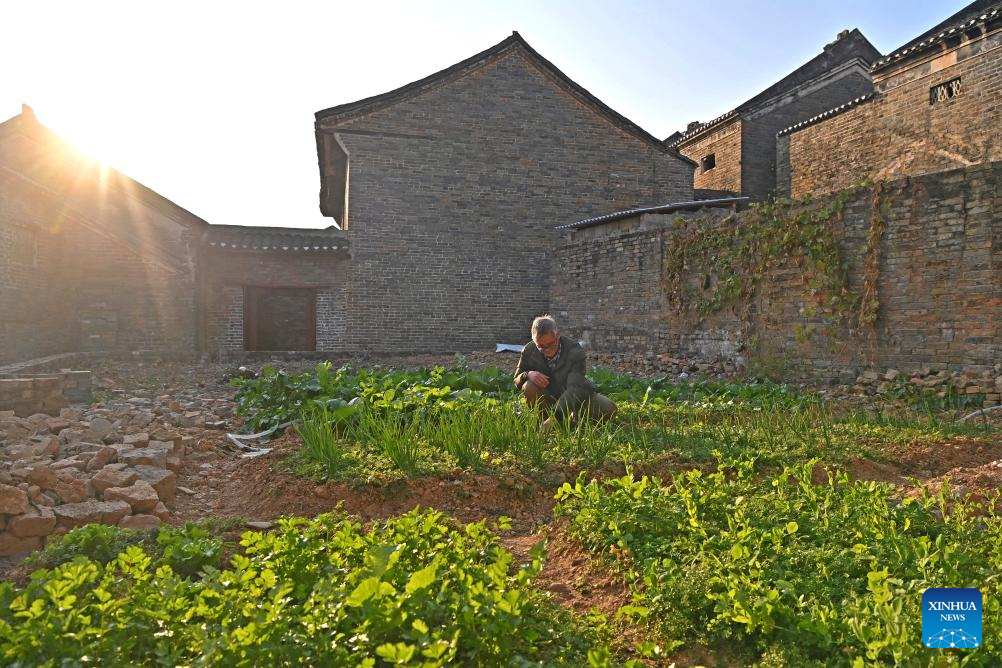
A villager weeds in a vegetable field at Longteng Hamlet, Na'an Village in Tongmu Town of Jinxiu Yao Autonomous County, south China's Guangxi Zhuang Autonomous Region, Dec. 18, 2024. Nestled in central Guangxi, Longteng Hamlet boosts 49 ancient buildings in the style of the Ming (1368-1644) and Qing (1644-1911) dynasties. From the end of the Ming dynasty to the present, for more than 400 years, the Liang clan has thrived here, which has been 17 generations so far.
In 1620, the Liang family moved here from the west part of south China's Guangdong Province. Overlooking the mountains covered with stones like dragon scales, this area looks like a soaring dragon. Therefore they named here "Longteng", meaning dragon flying in Chinese, and settled here ever since.
Covering an area of more than 20,000 square meters, the ancient building group in the hamlet is currently the best preserved and largest one of Ming and Qing dynasties in central Guangxi.
As living standards improved in recent years, the cultural life of the villagers has become increasingly rich, with various activities injecting vitality into the hamlet. (Xinhua/Zhou Hua)
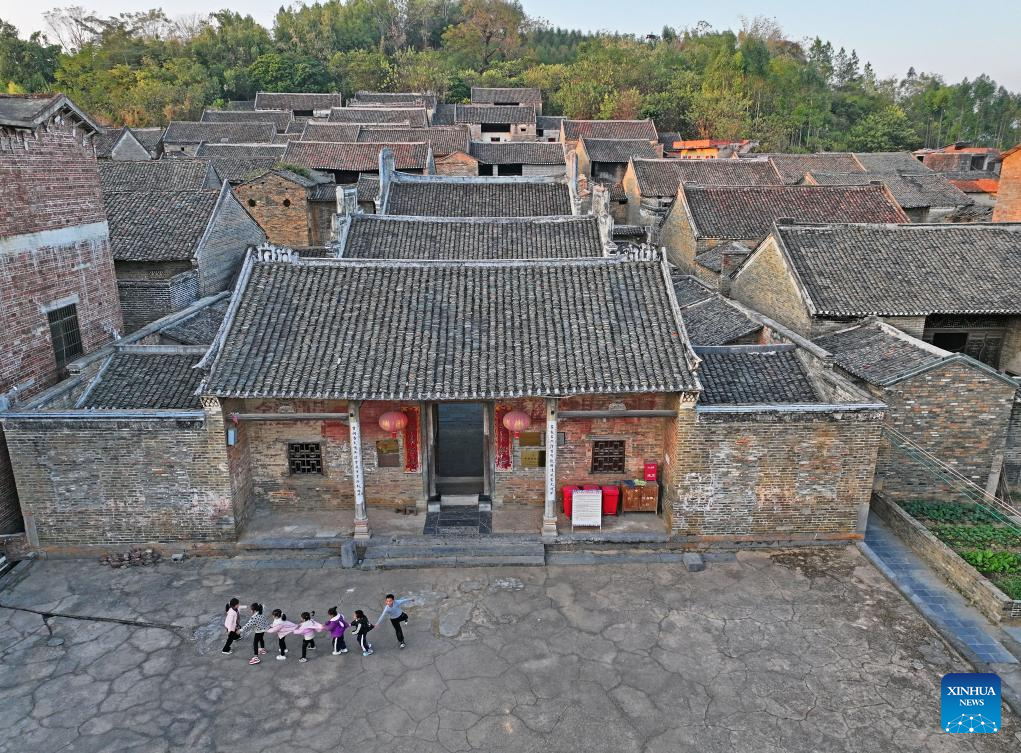
An aerial drone photo taken on Dec. 18, 2024 shows kids playing at Longteng Hamlet, Na'an Village in Tongmu Town of Jinxiu Yao Autonomous County, south China's Guangxi Zhuang Autonomous Region. Nestled in central Guangxi, Longteng Hamlet boosts 49 ancient buildings in the style of the Ming (1368-1644) and Qing (1644-1911) dynasties. From the end of the Ming dynasty to the present, for more than 400 years, the Liang clan has thrived here, which has been 17 generations so far.
In 1620, the Liang family moved here from the west part of south China's Guangdong Province. Overlooking the mountains covered with stones like dragon scales, this area looks like a soaring dragon. Therefore they named here "Longteng", meaning dragon flying in Chinese, and settled here ever since.
Covering an area of more than 20,000 square meters, the ancient building group in the hamlet is currently the best preserved and largest one of Ming and Qing dynasties in central Guangxi.
As living standards improved in recent years, the cultural life of the villagers has become increasingly rich, with various activities injecting vitality into the hamlet. (Xinhua/Zhou Hua)
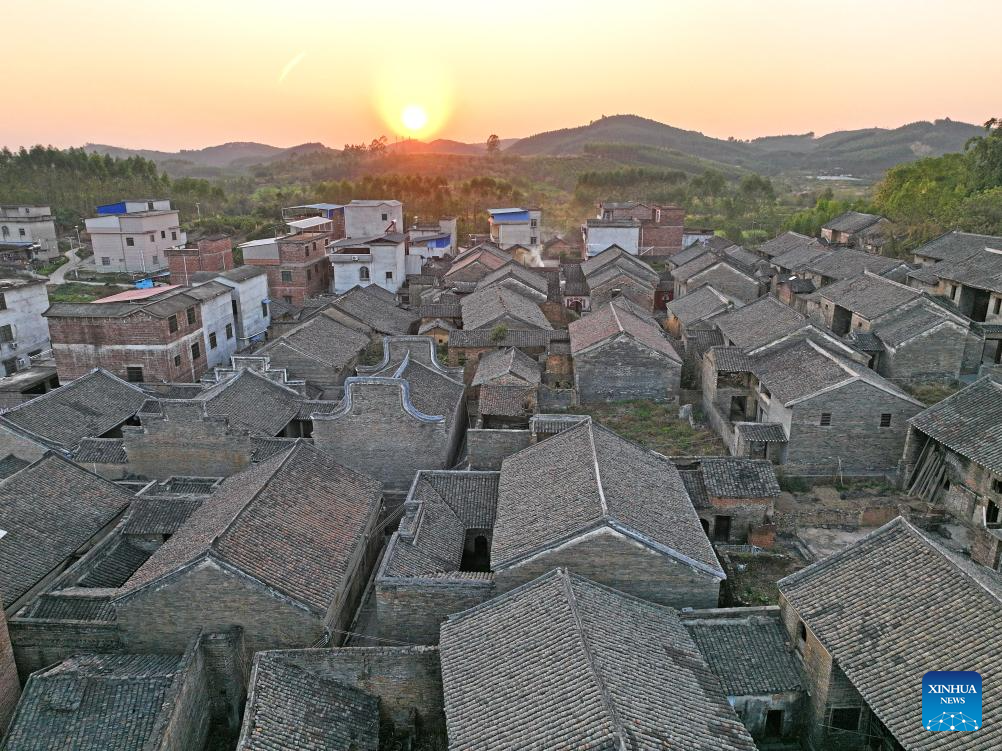
An aerial drone photo taken on Dec. 18, 2024 shows the scenery of Longteng Hamlet, Na'an Village in Tongmu Town of Jinxiu Yao Autonomous County, south China's Guangxi Zhuang Autonomous Region. Nestled in central Guangxi, Longteng Hamlet boosts 49 ancient buildings in the style of the Ming (1368-1644) and Qing (1644-1911) dynasties. From the end of the Ming dynasty to the present, for more than 400 years, the Liang clan has thrived here, which has been 17 generations so far.
In 1620, the Liang family moved here from the west part of south China's Guangdong Province. Overlooking the mountains covered with stones like dragon scales, this area looks like a soaring dragon. Therefore they named here "Longteng", meaning dragon flying in Chinese, and settled here ever since.
Covering an area of more than 20,000 square meters, the ancient building group in the hamlet is currently the best preserved and largest one of Ming and Qing dynasties in central Guangxi.
As living standards improved in recent years, the cultural life of the villagers has become increasingly rich, with various activities injecting vitality into the hamlet. (Xinhua/Zhou Hua)
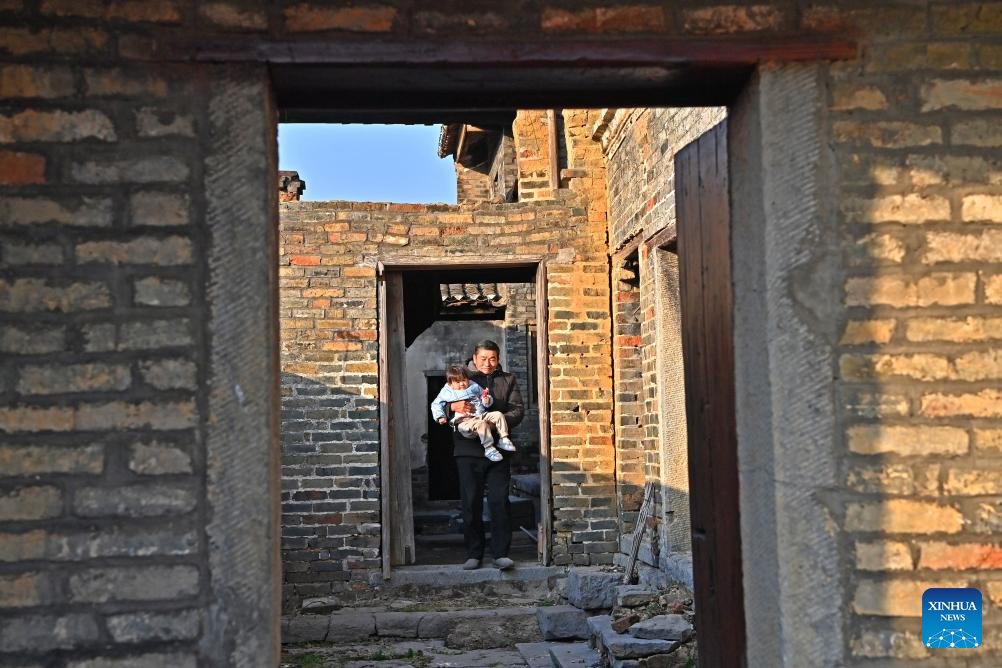
Villagers are pictured at an ancient building at Longteng Hamlet, Na'an Village in Tongmu Town of Jinxiu Yao Autonomous County, south China's Guangxi Zhuang Autonomous Region, Dec. 19, 2024. Nestled in central Guangxi, Longteng Hamlet boosts 49 ancient buildings in the style of the Ming (1368-1644) and Qing (1644-1911) dynasties. From the end of the Ming dynasty to the present, for more than 400 years, the Liang clan has thrived here, which has been 17 generations so far.
In 1620, the Liang family moved here from the west part of south China's Guangdong Province. Overlooking the mountains covered with stones like dragon scales, this area looks like a soaring dragon. Therefore they named here "Longteng", meaning dragon flying in Chinese, and settled here ever since.
Covering an area of more than 20,000 square meters, the ancient building group in the hamlet is currently the best preserved and largest one of Ming and Qing dynasties in central Guangxi.
As living standards improved in recent years, the cultural life of the villagers has become increasingly rich, with various activities injecting vitality into the hamlet. (Xinhua/Zhou Hua)
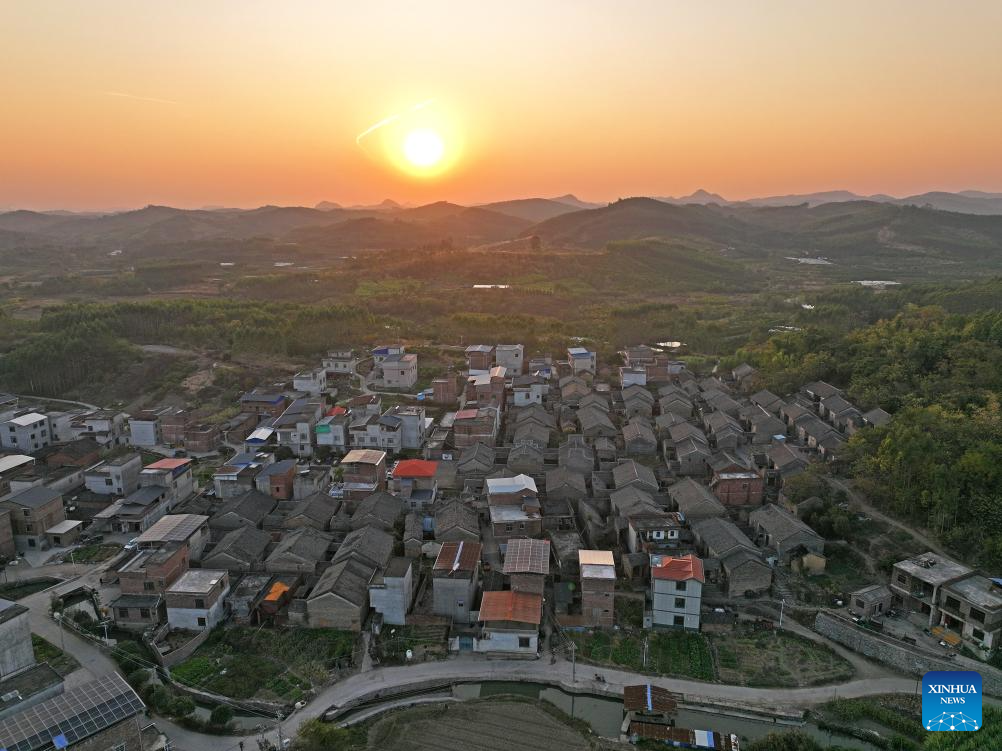
An aerial drone photo taken on Dec. 18, 2024 shows the scenery of Longteng Hamlet, Na'an Village in Tongmu Town of Jinxiu Yao Autonomous County, south China's Guangxi Zhuang Autonomous Region. Nestled in central Guangxi, Longteng Hamlet boosts 49 ancient buildings in the style of the Ming (1368-1644) and Qing (1644-1911) dynasties. From the end of the Ming dynasty to the present, for more than 400 years, the Liang clan has thrived here, which has been 17 generations so far.
In 1620, the Liang family moved here from the west part of south China's Guangdong Province. Overlooking the mountains covered with stones like dragon scales, this area looks like a soaring dragon. Therefore they named here "Longteng", meaning dragon flying in Chinese, and settled here ever since.
Covering an area of more than 20,000 square meters, the ancient building group in the hamlet is currently the best preserved and largest one of Ming and Qing dynasties in central Guangxi.
As living standards improved in recent years, the cultural life of the villagers has become increasingly rich, with various activities injecting vitality into the hamlet. (Xinhua/Zhou Hua)
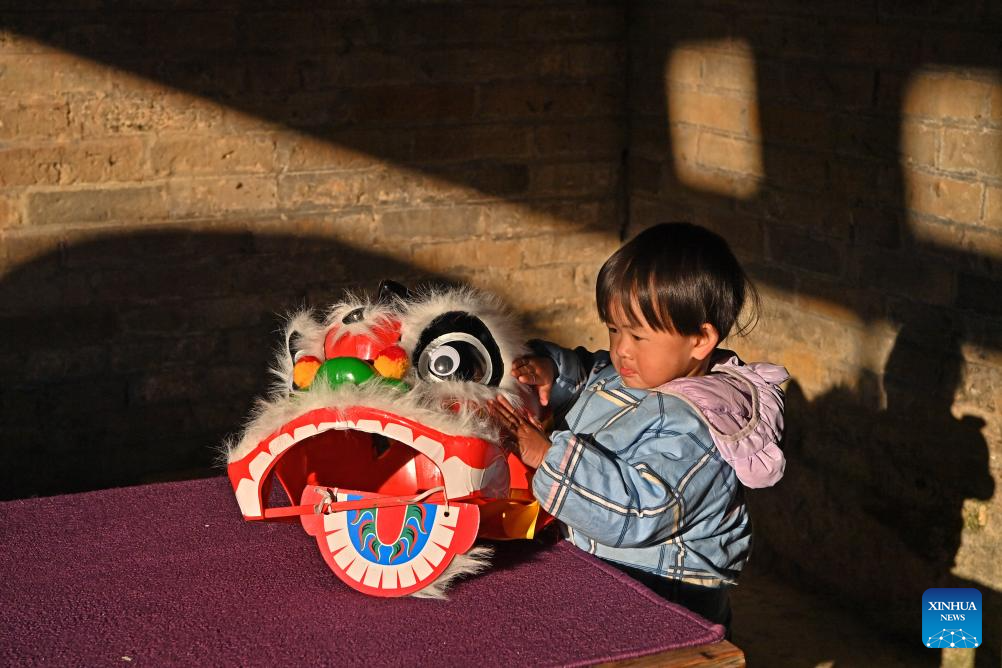
A kid touches the headgear for the lion dance at Longteng Hamlet, Na'an Village in Tongmu Town of Jinxiu Yao Autonomous County, south China's Guangxi Zhuang Autonomous Region, Dec. 19, 2024. Nestled in central Guangxi, Longteng Hamlet boosts 49 ancient buildings in the style of the Ming (1368-1644) and Qing (1644-1911) dynasties. From the end of the Ming dynasty to the present, for more than 400 years, the Liang clan has thrived here, which has been 17 generations so far.
In 1620, the Liang family moved here from the west part of south China's Guangdong Province. Overlooking the mountains covered with stones like dragon scales, this area looks like a soaring dragon. Therefore they named here "Longteng", meaning dragon flying in Chinese, and settled here ever since.
Covering an area of more than 20,000 square meters, the ancient building group in the hamlet is currently the best preserved and largest one of Ming and Qing dynasties in central Guangxi.
As living standards improved in recent years, the cultural life of the villagers has become increasingly rich, with various activities injecting vitality into the hamlet. (Xinhua/Zhou Hua)
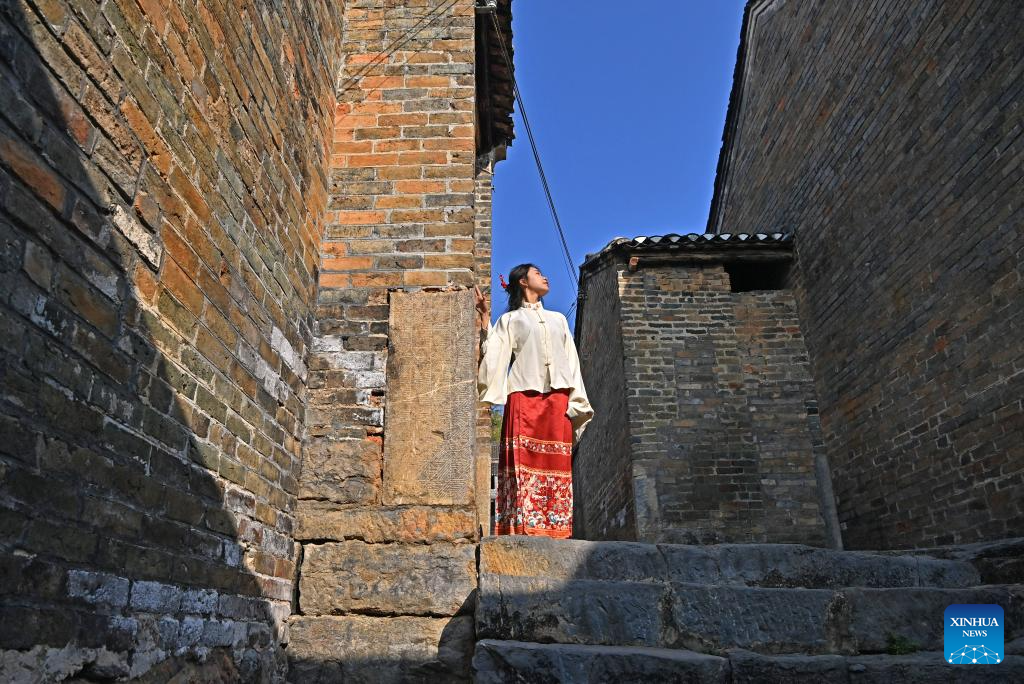
A tourist visits Longteng Hamlet, Na'an Village in Tongmu Town of Jinxiu Yao Autonomous County, south China's Guangxi Zhuang Autonomous Region, Dec. 19, 2024. Nestled in central Guangxi, Longteng Hamlet boosts 49 ancient buildings in the style of the Ming (1368-1644) and Qing (1644-1911) dynasties. From the end of the Ming dynasty to the present, for more than 400 years, the Liang clan has thrived here, which has been 17 generations so far.
In 1620, the Liang family moved here from the west part of south China's Guangdong Province. Overlooking the mountains covered with stones like dragon scales, this area looks like a soaring dragon. Therefore they named here "Longteng", meaning dragon flying in Chinese, and settled here ever since.
Covering an area of more than 20,000 square meters, the ancient building group in the hamlet is currently the best preserved and largest one of Ming and Qing dynasties in central Guangxi.
As living standards improved in recent years, the cultural life of the villagers has become increasingly rich, with various activities injecting vitality into the hamlet. (Xinhua/Zhou Hua)
点击右上角![]() 微信好友
微信好友
 朋友圈
朋友圈

请使用浏览器分享功能进行分享
